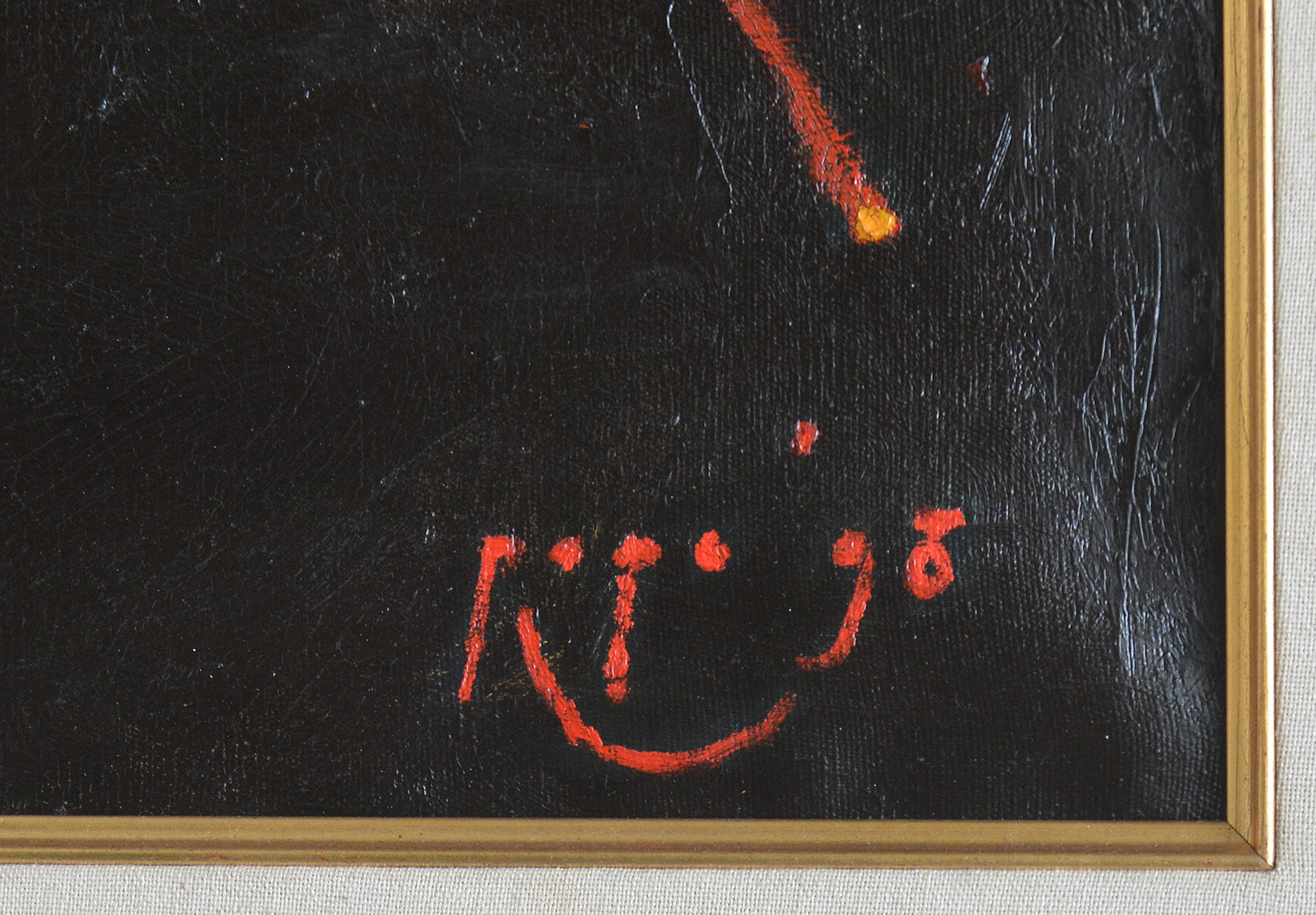LOT 915
Popo Iskandar
(1927 - 2000, Indonesian)
Jago Merah Berkokok Lantang
painted in 1998
oil on canvas
100 x 80 cm
signed and dated on lower right
S$ 7,800 - 8,800
US$ 6,025 - 6,795
This lot is accompanied with certificate of authenticity from the artist
Pick up point: Jakarta
In the present lot, Popo Iskandar once again affirms his mastery in transforming a familiar motif into an image of raw emotional resonance. Painted in 1998 and measuring 100 × 80 cm, this striking work depicts a rooster—Popo's iconic symbol—standing tall against a deep, velvety night. The bird's crimson body unfurls in sweeping gestures, its feathers rendered in a fusion of fiery reds, midnight blues, and glowing ochres. This dynamic interplay of colour evokes not only the physical presence of the rooster but also its spirited proclamation at dawn.
Popo's tactile brushwork is bold and expressive, building a rhythmic surface that pulses with vitality. The rooster becomes more than an animal; it is a metaphor for courage, awakening, and the unyielding will to announce one's existence. The luminous yellow orb—suggestive of a rising sun or a blazing moon—heightens the drama, casting the rooster as a guardian of thresholds between darkness and light.
Accompanied by a certificate issued directly by the artist, this work stands as a testament to Popo Iskandar's lifelong dialogue with the animal world and his ability to infuse introspection into instinct. Jago Merah Berkokok Lantang is not merely a depiction, but a declaration—bold, resonant, and unmistakably Popo.
Condition Report
The painting is in good condition. The canvas is in plane, free of deformations and under adequate tension. Paint layers are intact and in stable condition. No retouching was detected under UV light examination. The painting is offered with frame.
Please note that this report has been compiled by Larasati staff based solely on their observation on the work. Larasati specialists are not professional conservators; thus the report should be treated only as an expression of opinion and not as a statement of fact. We suggest that you consult your own restorer for a more thorough report. We remind you again that all work is sold 'as is' and should be viewed personally by you or your professional adviser before the sale to assess its condition.
IMPORTANT NOTICE :
Kindly note that the Auctioneer will conduct the auction LIVE in the Sale Room. To comply with venue's Health Regulations, bidders are encouraged to register for phone bidding or putting absentee/written bid. You can also register to participate live on www.invaluable.com. Bidding will be carried out in Singapore Dollars. Any other currencies shown is just for reference only.
How To Bid
Absentee or Telephone Bid
To submit an Absentee Bid or Telephone Bid, please complete this form and submit to info@larasati.com.
Online Bidding
To bid via Live Online Bidding please register on:
INVALUABLE:
https://s.id/LRST12DEC25
Bidding will be carried out in Singapore Dollars.
Any other currencies shown is just for reference only.





